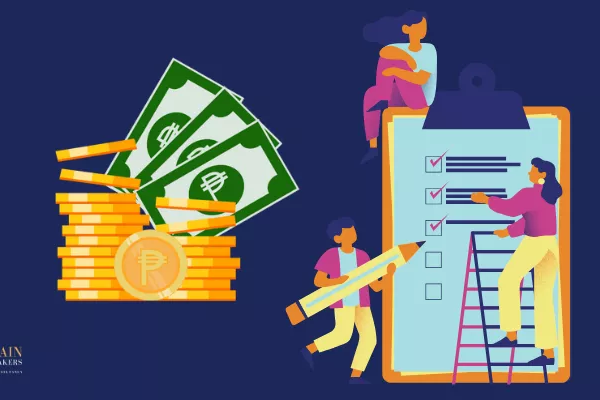by Venchito Tampon | Last Updated on October 31, 2024
Strategic thinking and intuitive thinking are two essential cognitive skills any leader must possess and master in problem-solving, decision-making, and leadership.
While they operate on opposite ends of the spectrum, understanding them to leverage their strengths can lead to better outcomes in your professional line of work.
In this guide, we’ll explore the differences between strategic thinking and intuitive thinking, the factors that shape them, and actionable tips to improve both. Let’s begin.
Contents
ToggleThe Difference Between Strategic Thinking and Intuitive Thinking
Strategic thinking is a structured and systematic approach to analyzing complex situations, considering long-term goals, and planning the most effective path to achieve them.
Conversely, intuitive thinking is an instinctive, gut-felling approach to decision-making. It is spontaneous and relies on experience, emotions, and immediate recognition of patterns without extensive analysis.
Two famous experts describe strategic thinking and intuitive thinking. Dr. Jeanne Liedtka, a University of Virginia’s Darden School of Business professor, describes strategic thinking as discovering key insights that shape your future choices and actions.
In his book Thinking Fast and Slow, Daniel Kahneman, a Nobel Prize-winning psychologist, describes intuitive thinking as “fast thinking” that is automatic and effortless.
Key Characteristics of Strategic Thinking:
- Analytical and methodical
- Involves careful planning and forecasting
- Focuses on long-term goals
- Considers risks, opportunities, and external factors
Key Characteristics of Intuitive Thinking:
- Spontaneous and quick
- Relies on experience and past patterns
- Emotion-driven
- Lacks formal analysis
Factors That Shape Strategic and Intuitive Thinking
Many factors shape one’s strategic and intuitive thinking. Over time, these skills are developed as people mature and their environment nurtures them. A few vital factors that influence both of these thinking models include:
A. Experience and Expertise
Experience is one of the most significant factors shaping intuitive thinking. On the other hand, exposure shapes strategic thinking when exposed to complex problem-solving situations and deliberate practice.
As a trainer and speaker, I’ve seen this happen in my career. The more I step into the next level of challenges, training new groups of professionals, the more it develops my strategic thinking. Seeing through the lens of their needs and challenges, aligning it with the programs I was tasked to deliver.
Exposure to different levels of environment, audiences, and challenges is necessary to practice our strategic thinking skills more.
For leaders and managers like me, strategic thinking gets its honing phase when we make decisions for the team. As teams become more complex as they go through the different levels of team development—which I shared in my team training guide—you’ll find yourself applying strategic thinking skills in handling teams at their different stages—managing conflicts to allocating resources to increase work performance.
B. Cognitive Style
Cognitive style refers to an individual’s preferred way of processing information. People with an analytical cognitive style tend to favor strategic thinking, while those with a holistic cognitive style are more inclined to use intuitive thinking.
C. Emotional Intelligence (EQ)
Emotional intelligence plays a critical role in both strategic and intuitive thinking. People with high EQ are better at sensing emotions, which helps improve their intuitive thinking. Conversely, emotional intelligence aids strategic thinking by allowing individuals to assess situations objectively and control impulsive reactions.
I’ve seen leaders with high EQ who realistically assess situations not based on how they feel but on what they think is right. Emotional intelligence translates to better decision-making and problem-solving skills based on facts and data, not just gut feelings.
D. Environment and Context
Based on context, the environment can dictate which thinking style is more effective. High-pressure situations with limited time for analysis often favor intuitive thinking, while complex scenarios requiring a detailed plan benefit from strategic thinking.
I observed this during our corporate training sessions: the moment we change the vibe or environment style of the training, it enables them to change their thinking style, which translates to better behavior and skill enhancement.
How to Improve Strategic Thinking and Intuitive Thinking
Given that strategic thinking and intuition are critical cognitive skills that require deliberate practice, self-awareness, and proper utilization of the right tools. Here’s how to improve both skills:
1. Engage in Long-Term Planning Exercises
Be involved in as many strategic thinking or planning exercises as possible. Whether you’re an employee participating in a strategic planning exercise for managers and directors or running your own business strategies and scenario analysis, all these exercises can help strengthen your ability to think systematically.
2. Practice Critical Thinking
Critical thinking is the foundation of strategic thinking. Consider different root cause analysis tools, such as “5 Whys” techniques, “RCA,” “Fishbone Diagram,” and 5Ms of Management frameworks—all these have their own advantages that can help you get to the root cause of the problem.
3. Use Strategic Frameworks
If you’re engaging heavily in strategic planning, strategic management, and critical thinking exercises to find opportunities, both internal and external, in your organization, familiarize yourself with strategic frameworks. These include SWOT Analysis (Strengths, Weaknesses, Opportunities, Threats), PESTLE Analysis (Political, Economic, Social, Technological, Legal, and Environmental), or the Balanced Scorecard to guide your strategic thinking.
Utilizing strategic frameworks is best because it helps you improve your strategic thinking skills, along with other colleagues, during thinking exercises.
4. Seek Diverse Perspectives
Strategic thinkers broaden their viewpoints by engaging with people from different industries, contexts, cultures, or backgrounds. This kind of exposure to diverse perspectives provides fresh insights and helps anticipate challenges from various angles.
There are many trainings that help teams instill collaboration and diversity. Here in the Philippines, we have diversity and inclusion training and team collaboration training, both of which include exercises on gaining diverse perspectives from others.
5. Reflect on Past Experiences
Reflect regularly on your past decisions and experiences to identify patterns, construct new lessons, and develop yourself both personally and professionally. This habit strengthens your ability to draw on intuition when faced with similar situations in the future.
6. Trust Your Gut Feelings
Intuition is often underrated by many. While it’s true that you cannot base all your decisions on gut feelings alone. If the situation has low-risk and isn’t major enough that it will dictate the trajectory in one area of your life, it is best to refine your intuitive thinking based on intuition. You’ll then find yourself improving your confidence in your instincts.
7. Develop Mindfulness Practices
Another way to get the most out of your thinking exercises is through mindfulness meditation. It can enhance intuitive thinking by improving awareness of thoughts and emotions.
A study published in Psychological Science found that mindfulness practices increase the ability to recognize intuitive insights.
8. Embrace New Experiences
Expose yourself to new situations and challenges to increase the range, depth, and width of your experiences stored in your memory. This diversity provides more reference points that can help you make better decisions in the future.
Balancing Strategic and Intuitive Thinking
While strategic and intuitive thinking have distinct differences, they are not mutually exclusive.
The most influential decision-makers leverage both skills, depending on the situation. A Harvard Business Review study suggests that blending strategic and intuitive thinking leads to better outcomes, especially in dynamic environments.
Cultivate the right balance between strategic and intuitive thinking to ensure a well-rounded approach, which will allow you to navigate challenges confidently and clearly.
The Author
Venchito Tampon
Venchito Tampon is a Filipino motivational speaker, Business Consultant, Founder and Lead Corporate Trainer of Rainmakers Training Consultancy. He trained and spoken in over 250+ conventions, seminars, and workshops across the Philippines and internationally including Singapore, Slovakia, and Australia. He has worked with top corporations including SM Hypermarket, Shell, and National Bookstore.
He also founded SharpRocket, a digital marketing company, Blend N Sips, eCommerce for coffee supplies, and Hills & Valleys Cafe, a local cafe with available franchising.
He is a certified member of The Philippine Society for Talent Development (PSTD), the premier organization for Talent Development practitioners in the country.
An active Go Negosyo Mentor (of Mentor Me program) and a business strategist and consultant.
You may also like
How Much Does Management Training Cost in the Philippines in 2025?
How Much Does Management Training Cost in the Philippines in 2025? Management…
Best Leadership Training Providers in the Philippines [2025]
With many training options available, choosing the right leadership training…




